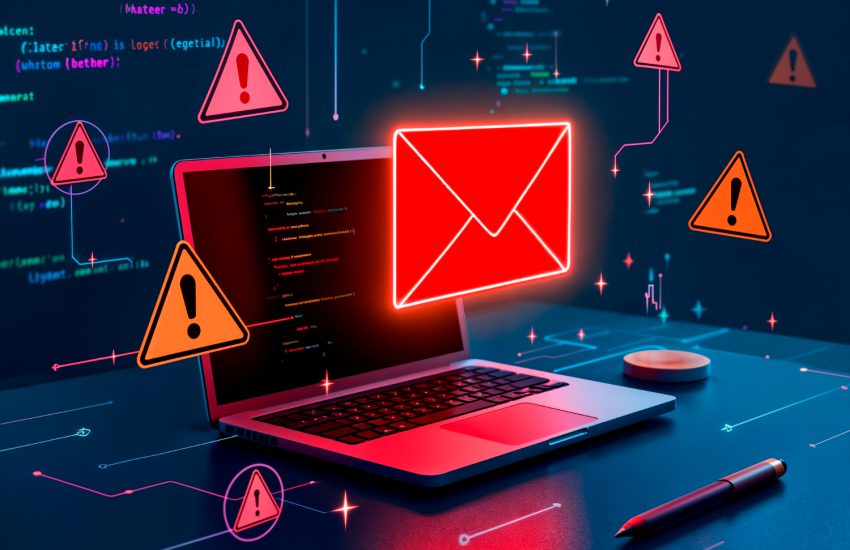In today’s digital age, our inboxes are a gateway to information, communication, and unfortunately, a common target for malicious actors. Phishing emails have evolved from easily spotted scams to sophisticated deceptions, making how to detect phishing emails a critical skill for everyone. We’re committed to helping you navigate the digital landscape safely. That’s why we’ve put together this comprehensive guide to equip you with the knowledge to spot and neutralize these threats.
Understanding what are phishing emails is the first step. They are fraudulent attempts by cybercriminals to trick you into revealing sensitive information – such as usernames, passwords, credit card details, or bank account numbers – often by impersonating a trustworthy entity like a bank, a well-known company, or even a government agency. These scams can lead to significant financial loss, identity theft, and severe data breaches.
The Scale of the Threat: Why Vigilance Matters More Than Ever
Consider these alarming statistics:
- In 2023, India alone experienced over 79 million phishing attacks, ranking as the third most targeted country globally, after the US and UK.
- The financial sector in India saw a staggering 175% surge in phishing attacks in the first half of 2024.
- Cybercrime complaints in India surged from 15.56 lakh in 2023 to 19.18 lakh in 2024, with citizens losing a whopping ₹22,812 crore (approximately $2.78 billion) to digital frauds in 2024 alone. This is nearly three times the amount lost in 2023!
- A significant portion of these attacks, roughly 80% of phishing campaigns in 2024, utilized AI-generated content, making them increasingly difficult to spot without proper awareness.
These figures underscore the urgent need for robust cybersecurity measures and individual vigilance. Let’s dive into the 10 effective ways we can all become better at detecting phishing emails.
1. Scrutinize the Sender’s Email Address (Beyond the Display Name)
One of the most immediate red flags when learning how to detect phishing emails is the sender’s actual email address. While the display name might look legitimate (“Google Support” or “Your Bank”), hover your cursor over it (or tap on mobile) to reveal the true email address.
- Mismatch Alert: If “PayPal Service” comes from [email protected] instead of [email protected], it’s a phishing attempt.
- Typographical Twins: Look for subtle misspellings like [email protected] instead of [email protected].
- Generic Domains: Official communications rarely come from generic addresses like @gmail.com or @outlook.com.
2. Hover Over Links (But Resist the Urge to Click!)
This is perhaps the most crucial tip for how to identify phishing emails. Phishers often embed malicious links that appear legitimate. Before clicking any link, hover your mouse over it (don’t click!) to see the actual URL.
- Display vs. Destination: A link text might say www.yourbank.com, but the hover text might reveal http://malicious-site.com/login.
- Suspicious URLs: Look for misspellings, random characters, or subdomains that don’t belong to the legitimate entity (e.g., login.evilhacker.xyz/bank).
- No HTTPS: While not a definitive indicator, legitimate login pages will always use https:// and often display a padlock icon, indicating a secure connection.
3. Analyze the Email’s Subject Line
Phishing emails often employ psychological tactics in their subject lines to provoke an immediate response.
- Urgency & Threats: Subject lines like “Account Suspended: Urgent Action Required,” “Your Invoice is Overdue,” or “Security Alert!” aim to create panic.
- Too Good to Be True: “You’ve Won a Lottery!” or “Exclusive Discount Just For You” are classic lures.
- Generic & Unexpected: Vague subjects like “Important Update” or an unexpected “Delivery Notification” can also be suspicious.
4. Check for Generic Greetings and Impersonal Language
Legitimate organizations will almost always personalize their communications, especially when dealing with sensitive information.
- “Dear Customer” / “Dear User”: A common giveaway. Your bank or service provider knows your name.
- Lack of Personal Details: If an email about your account doesn’t mention your account number, recent activity, or other specific identifiers, be wary.
5. Look for Spelling and Grammatical Errors
Professional companies employ copywriters and proofreaders. Phishing emails, often created hastily by non-native speakers, are typically riddled with errors.
- Typos & Awkward Phrasing: Frequent spelling mistakes, incorrect punctuation, and grammatically awkward sentences are major red flags that help us detect phishing emails.
- Inconsistent Capitalization: Random capitalization can also indicate a scam.
6. Be Wary of Unexpected Attachments
Attachments are a common vector for malware. If an email contains an unexpected attachment, even from a known sender, exercise extreme caution.
- Suspicious File Types: Be very careful with .exe, .zip, .js, .vbs, .docm (macro-enabled Word documents), or .xlsm (macro-enabled Excel spreadsheets).
- Unsolicited Files: Did you expect a document? If not, don’t open it. Always scan attachments with robust antivirus software before opening, if you must.
7. Examine the Call to Action (CTA)
Phishing emails are designed to elicit a specific action, usually an immediate one.
- Sense of Extreme Urgency: “Click here within 24 hours or your account will be closed!” is a classic phishing tactic.
- Demands for Sensitive Information: Legitimate companies will never ask you to email your password, credit card number, or Social Security number.
- Unusual Requests: Be suspicious of requests to confirm strange transactions or verify login details without a clear, legitimate reason.
8. Verify the Sender Through Other Channels (When in Doubt)
If an email raises even the slightest suspicion, do not engage with it directly. This is key to how to prevent phishing emails from impacting you.
- Official Website: Type the organization’s official URL directly into your browser (do NOT use any link from the suspicious email). Then, log in or navigate to their customer service section.
- Official Contact Numbers: Use the phone number listed on their official website to call and inquire about the email. Never use a number provided in the suspicious email.
9. Check for Inconsistent Branding and Poor Graphics
While some sophisticated phishing attacks can mimic branding well, many still fall short.
- Low-Resolution Logos: Pixelated or stretched images are a sign of amateurism.
- Incorrect Logos/Colors: Subtle deviations from the company’s official branding.
- Mismatched Fonts/Formatting: Inconsistent text styles, awkward layouts, or missing standard elements like footers or legal disclaimers.
10. Trust Your Gut Feeling and Report Suspicious Emails
Your intuition is a powerful tool in how to detect phishing emails. If something feels “off” – even if you can’t pinpoint why – it’s best to be cautious.
- Don’t Ignore Your Instincts: A strange tone, an unexpected request, or an unusual sender can all trigger a gut feeling.
- Report, Don’t Just Delete: Learning how to report phishing emails is crucial. Most email providers (like Gmail, Outlook) have built-in “Report Phishing” or “Report Spam” buttons.
- Corporate Environments: If this is a work email, forward it to your IT or cybersecurity department immediately. This helps your organization protect itself and others.
How to Stop Phishing Emails & How to Prevent Phishing Emails
While completely stopping phishing emails from reaching your inbox is challenging, you can significantly reduce their impact:
- Spam Filters: Enable and regularly update your email provider’s spam filters.
- Email Authentication: Encourage your email service provider to implement DMARC, SPF, and DKIM to authenticate legitimate senders.
- Regular Training: Stay informed about the latest phishing tactics.
- Strong, Unique Passwords: Use complex passwords for all accounts and enable Two-Factor Authentication (2FA) wherever possible.
- Antivirus/Anti-Malware: Keep your security software updated.
Bulk Email Verification: Improve Your Email Security
At myEmailVerifier, we understand the importance of a clean and secure email list, especially for businesses. Our Bulk Email Verification service helps you maintain the integrity of your email campaigns by identifying and removing invalid, risky, or potentially malicious email addresses. By verifying your lists, you reduce bounce rates, improve deliverability, and minimize exposure to potential spam traps and phishing risks, thereby strengthening your overall email security posture.

Frequently Asked Questions (FAQs)
How to Stop Phishing Emails?
While you can’t completely stop phishing emails from being sent, you can prevent them from reaching your primary inbox by using strong spam filters, regularly updating your security software, and being vigilant about what you click. Implementing two-factor authentication (2FA) on your accounts also adds a crucial layer of security.
How to Identify Phishing Emails?
You can identify phishing emails by scrutinizing the sender’s email address, hovering over links before clicking, checking for generic greetings, looking for spelling and grammatical errors, being wary of unexpected attachments, and analyzing the call to action for urgency or demands for sensitive information.
How to Prevent Phishing Emails?
Preventing the impact of phishing emails involves a multi-layered approach: educating yourself on common tactics, using reliable email security features (like spam filters), never clicking suspicious links or opening unsolicited attachments, using strong and unique passwords, enabling 2FA, and regularly verifying the legitimacy of emails through official channels.
What are Phishing Emails?
Phishing emails are fraudulent email messages designed to trick recipients into revealing sensitive personal information (like passwords, credit card numbers, or bank details) or installing malware on their devices. They often impersonate trusted entities to gain credibility.
How to Report Phishing Emails?
To report phishing emails, use the “Report Phishing” or “Report Spam” button in your email client (e.g., Gmail, Outlook). For corporate emails, forward them to your IT security department. You can also report them to relevant government agencies or cybersecurity organizations in your region, such as CERT-In in India or the Anti-Phishing Working Group (APWG).
How to Report Phishing Emails Outlook?
In Outlook, you can easily report phishing emails. Select the suspicious email, then go to the “Report Message” group in the ribbon. Click on “Phishing” or “Junk” and then “Phishing” again. This action sends the email to Microsoft for analysis and moves it to your Junk Email folder.
James P. is Digital Marketing Executive at MyEmailVerifier. He is an expert in Content Writing, Inbound marketing, and lead generation. James’s passion for learning about people led her to a career in marketing and social media, with an emphasis on his content creation.
